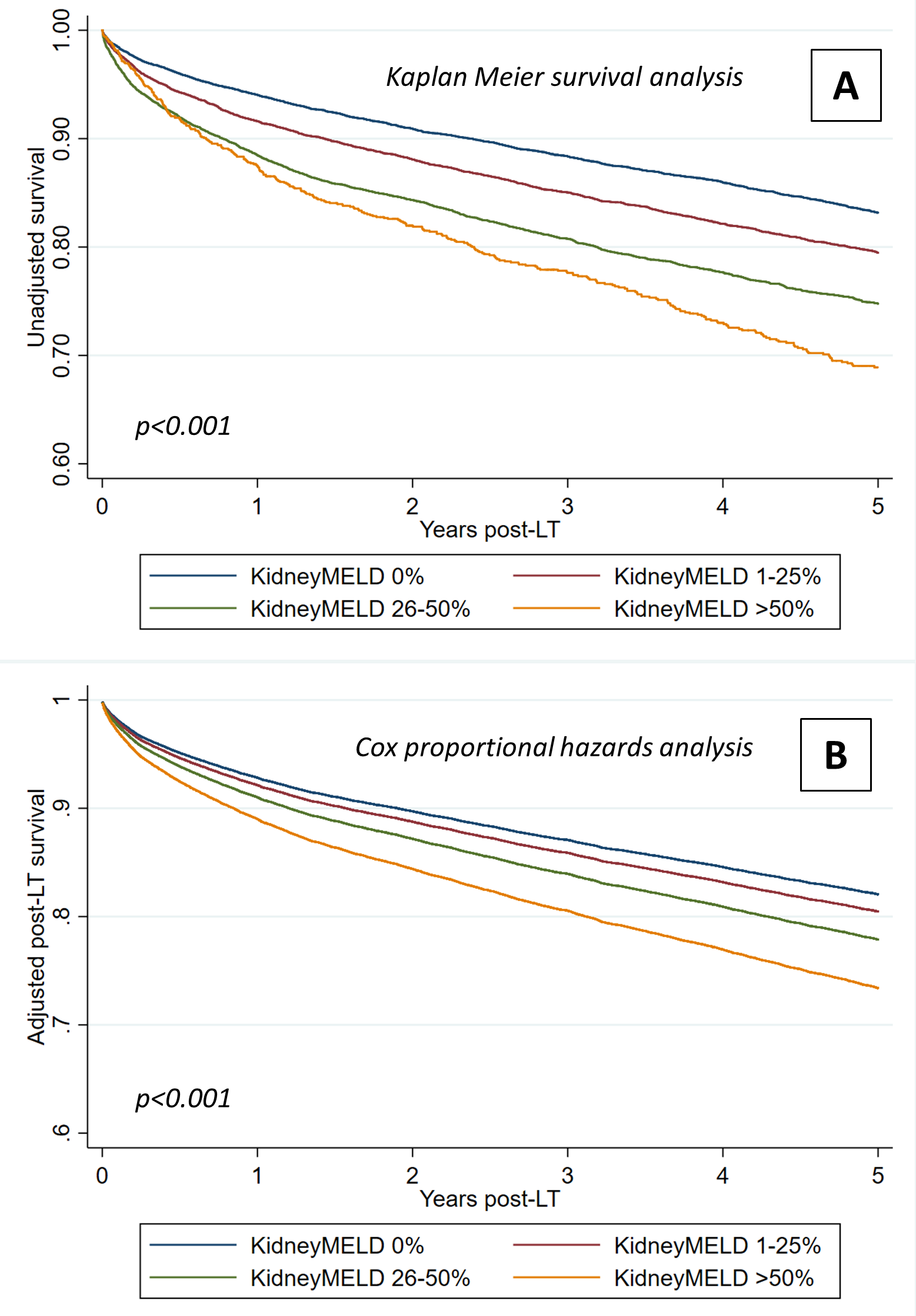Recipients with Model for End-Stage Liver Disease Sodium Score Driven by Renal Dysfunction Have Increased Post-Transplant Mortality
Gastroenterology, University of Pennsylvania, Philadelphia, PA
Meeting: 2019 American Transplant Congress
Abstract number: 551
Keywords: Liver transplantation, Outcome, Renal function
Session Information
Session Name: Concurrent Session: Liver - Kidney Issues in Liver Transplantation
Session Type: Concurrent Session
Date: Tuesday, June 4, 2019
Session Time: 4:30pm-6:00pm
 Presentation Time: 4:42pm-4:54pm
Presentation Time: 4:42pm-4:54pm
Location: Room 302
*Purpose: Since the adoption of the Model for End-stage Liver Disease (MELD) score as a primary means of waitlist prioritization for liver transplantation (LT), an increasing number of candidates are transplanted with renal dysfunction. However, the outcomes of those transplanted with a predominance of renal disease is unknown.
*Methods: This was a retrospective cohort study of first-time, liver only recipients transplanted between 2005-2015 without exception points using data from the United Network for Organ Sharing (UNOS). The exposure of interest was the proportion of MELD-sodium (MELD-Na) score attributable to creatinine (Cr), described as “KidneyMELD” and defined as: (9.57*ln Cr) / (MELD-Na – 6.43). Cox proportional hazards analysis adjusted for clinical and basic donor factors evaluated the association of KidneyMELD, both as continuous and categorical, with post-LT mortality.
*Results: Unadjusted post-LT survival was lower in recipients with increased KidneyMELD (Figure – Panel A; log rank p<0.001). Increasing KidneyMELD was associated with increased post-LT mortality independent of MELD-Na score (Figure - Panel B; p=0.001). The risk of post-LT mortality increased by 8% for each 10% increase in KidneyMELD (adjusted hazard ratio [aHR] 1.08, 95% CI: 1.03-1.12). Recipients with KidneyMELD >50% had a 56% increase in the risk of post-LT mortality compared to those with KidneyMELD of 0% (aHR 1.56, 95% CI 1.41-1.74). The interaction of KidneyMELD and MELD-Na was not significant (p=0.845) indicating that the risk of post-LT mortality associated with increasing KidneyMELD was the same across all MELD-Na scores. KidneyMELD was a stronger predictor of adjusted post-LT mortality than MELD-Na (aHR 1.00, 95% CI: 0.99-1.00, p=0.096).
*Conclusions: In conclusion, recipients prioritized for LT primarily on the basis of renal dysfunction have significantly increased post-LT mortality independent of MELD-Na score.
To cite this abstract in AMA style:
Bittermann T, Goldberg D. Recipients with Model for End-Stage Liver Disease Sodium Score Driven by Renal Dysfunction Have Increased Post-Transplant Mortality [abstract]. Am J Transplant. 2019; 19 (suppl 3). https://atcmeetingabstracts.com/abstract/recipients-with-model-for-end-stage-liver-disease-sodium-score-driven-by-renal-dysfunction-have-increased-post-transplant-mortality/. Accessed December 22, 2025.« Back to 2019 American Transplant Congress

